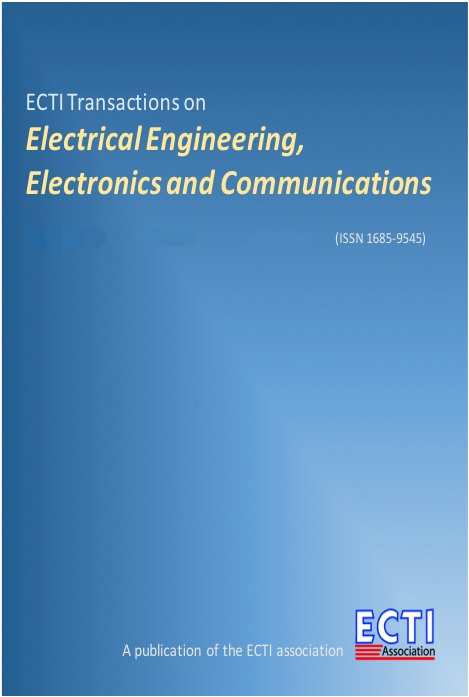Channel Estimation and Equalization Using FIM for MIMO-OFDM on Doubly Selective Faded Noisy Channels
Main Article Content
Abstract
Orthogonal frequency division multiplexing (OFDM) plays an important role in wireless communication due to its high transmission rate. Information is conveyed across spatial and temporal dimensions through the space-time shift keying (STSK) technique which is basically used to handle multiplexing diversity and gains. On the other hand, index modulation integrated OFDM not only communicates information through conventional signal constellations as in classical OFDM, but also through indexes of the subcarriers. In index modulation, the subcarriers are transmitted over a particular index and can be implemented effectively. The active indices are selected and further information bits transmitted. In this paper, to handle such limitations, the deep neural network (DNN) has been proposed for end-to-end performance. Under the noisy and faded channel scenario, channel state information must be acquired to recover the transmitted signal correctly. To evaluate the channel distortion level, a deep learning model is trained offline from simulated data and then applied to online data to estimate and recover the channel state as well as the transmitted signal, respectively, in comparison to the traditional least minimum mean square error (LMMSE) channel estimation technique. The analysis results demonstrate superiority over the conventional LMMSE for channel estimation and signal detection in wireless communications with complex channel distortion and interference. The mean square error (MSE) is evaluated for carrying out performance information in each subcarrier block and to reduce the detector error rate.
Article Details

This work is licensed under a Creative Commons Attribution-NonCommercial-NoDerivatives 4.0 International License.
This journal provides immediate open access to its content on the principle that making research freely available to the public supports a greater global exchange of knowledge.
- Creative Commons Copyright License
The journal allows readers to download and share all published articles as long as they properly cite such articles; however, they cannot change them or use them commercially. This is classified as CC BY-NC-ND for the creative commons license.
- Retention of Copyright and Publishing Rights
The journal allows the authors of the published articles to hold copyrights and publishing rights without restrictions.
References
B. Vucetic and J. Yuan, Space-Time Coding. Hoboken, NJ, USA: John Wiley & Sons, 2003.
E. Basar, “Index modulation techniques for 5g wireless networks,” IEEE Communications Magazine, vol. 54, no. 7, pp. 168–175, Jul. 2016.
B. Badic, “Space-time block coding for multiple antenna systems,” Ph.D. dissertation, Fakultät für Elektrotechnik und Informationstechnik, Technischen Universität Wien, Vienna, Austria, Nov. 2005. [Online]. Available: https://publik.tuwien.ac.at/files/pub-et_10819.pdf
K. K. Sarma and A. Mitra, “Estimation of MIMO channels using complex time delay fully recurrent neural network,” in 2011 2nd National Conference on Emerging Trends and Applications in Computer Science (NCETACS), 2011.
K. Rajeswari and S. J. Thiruvengadam, “Optimal power allocation for channel estimation in MIMO-OFDM system with per-subcarrier transmit antenna selection,” Radioengineering, vol. 24, no. 1, pp. 105–114, 2015.
S. Jacobsson, G. Durisi, M. Coldrey, U. Gustavsson, and C. Studer, “One-bit massive MIMO: channel estimation and high-order modulations,” in 2015 IEEE International Conference on Communication Workshop (ICCW), 2015.
L. Zhang and X. Zhang, “MIMO channel estimation and equalization using three-layer neural networks with feedback,” Tsinghua Science and Technology, vol. 12, no. 6, pp. 658–662, Dec. 2007.
C. Çiflikli, A. T. Özşahin, and A. Ç. Yapici, “Artificial neural network channel estimation based on levenberg-marquardt for OFDM systems,” Wireless Personal Communications, vol. 51, no. 2, pp. 221–229, 2008.
H. Wu, Y. Liu, and K. Wang, “Analysis of DFT-based channel estimation for uplink massive MIMO systems,” IEEE Communications Letters, vol. 22, no. 2, pp. 328–331, Feb. 2018.
A. Almamori and S. Mohan, “Estimation of channel state information for massive MIMO based on received data using kalman filter,” in 2018 IEEE 8th Annual Computing and Communication Workshop and Conference (CCWC), 2018, pp. 665–669.
H. Ye, G. Y. Li, and B.-H. Juang, “Power of deep learning for channel estimation and signal detection in OFDM systems,” IEEE Wireless Communications Letters, vol. 7, no. 1, pp. 114–117, Feb. 2018.
Y. Yang, F. Gao, X. Ma, and S. Zhang, “Deep learning-based channel estimation for doubly selective fading channels,” IEEE Access, vol. 7, pp. 36 579–36 589, 2019.
Y. Liao, Y. Hua, X. Dai, H. Yao, and X. Yang, “ChanEstNet: A deep learning based channel estimation for high-speed scenarios,” in 2019 IEEE International Conference on Communications (ICC 2019), 2019.
M. Soltani, V. Pourahmadi, A. Mirzaei, and H. Sheikhzadeh, “Deep learning-based channel estimation,” IEEE Communications Letters, vol. 23, no. 4, pp. 652–655, Apr. 2019.
A. Mishra, A. K. Jagannatham, and L. Hanzo, “Sparse bayesian learning-aided joint sparse channel estimation and ML sequence detection in spacetime trellis coded MIMO-OFDM systems,” IEEE Transactions on Communications, vol. 68, no. 2, pp. 1132–1145, Feb. 2020.
X. Wang, L. Gao, S. Mao, and S. Pandey, “CSI-based fingerprinting for indoor localization: A deep learning approach,” IEEE Transactions on Vehicular Technology, vol. 66, no. 1, pp. 763–776, Jan. 2017.
E. Nachmani, Y. Be'ery, and D. Burshtein, “Learning to decode linear codes using deep learning,” in 2016 54th Annual Allerton Conference on Communication, Control, and Computing (Allerton), 2016, pp. 341–346.
S. Chen, G. Gibson, C. Cowan, and P. Grant, “Adaptive equalization of finite non-linear channels using multilayer perceptrons,” Signal Processing, vol. 20, no. 2, pp. 107–119, Jun. 1990.


